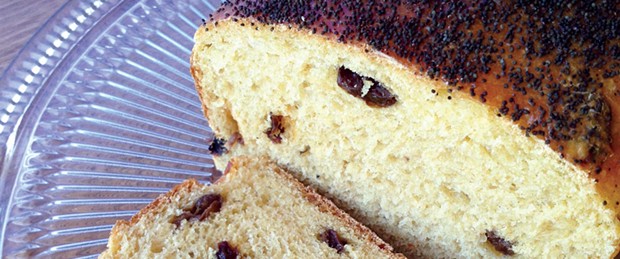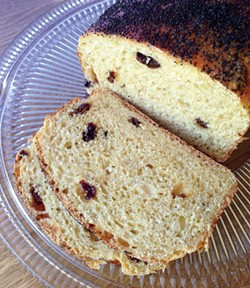[
{
"name": "Top Stories Video Pair",
"insertPoint": "7",
"component": "17087298",
"parentWrapperClass": "fdn-ads-inline-content-block",
"requiredCountToDisplay": "1"
}
]
I used to go egg hunting as a child. When visiting friends with chickens, I would go into the henhouse to look for an egg for myself. I was wary of hens and the rooster, but the lure of a fresh egg steeled me.
Sometimes the egg would be guarded, sat upon by its owner. Collecting an apparently abandoned egg was one thing; dislodging a hen to take away what was rightly hers was another. I solved the moral quandary by reminding myself that it was just a matter of time before the hen walked away from her egg and that I was simply speeding up the process — gently.
Addressing the hen as Signora Gallina (Mrs. Hen), I pleaded with her to move aside and let me get to the egg. I found hens fairly impervious to blandishment. The next step was a more forceful approach that often involved physical contact. I was kindness personified, though: I would say "mi scusi" (a formal excuse me) and, once I clutched the egg, grazie (thank you), while retreating in haste to escape a possible intervention by the rooster. Excited at feeling the warm egg in my hands, I quickly brushed away any remorse. To me, no candy tastes as good as a fresh egg.
All our disagreements as a family stopped at the henhouse's gates: We all liked eggs. They were always in my mother's refrigerator and our visits to the countryside always involved the acquisition of as many of them as possible. This was difficult during the darker months of the year, but spring brought relief in the shape of more active egg laying.
Eggs were featured prominently on the breakfast table on Easter Sunday, which we celebrated in my father's native village, north of Rome. Besides a plate of hard-boiled eggs there was the traditional pizza di Pasqua, a kind of Easter bread, its delicately sweet dough enriched with eggs and baked in a tall, round pan. Aunt Lucia baked the pizza for our table when I was a child, and took the recipe with her when she died. It's why I'm so eager to share recipes now.
In Perugia, the city where I was born and grew up, the centerpiece of the Easter breakfast table is similar in shape but decidedly savory, enriched with cheese. Regions throughout Italy and beyond all feature eggs in their traditional Easter recipes.
The recipe on this page is inspired by Lithuanian Easter bread. When you slice the loaf, you smell a light sweetness. You can eat the slice as is for the sheer pleasure of sinking your teeth into softness enlivened but not overwhelmed by plump raisins, or you can top it with fruit preserves, cheese or a favorite savory spread. Leftovers make a festive French toast.
Everyday Easter Bread
For this bread I use delayed fermentation, so the preparation starts the evening before baking.
You'll need a digital scale, a meat thermometer and a 9-by-5-inch loaf pan.
Ingredients and method:
½ cup raisins (golden raisins are traditional: I use what I have available, usually flame raisins)
¼ cup lukewarm black tea or water (to rehydrate the raisins)
A scant cup of nonfat milk at 95 F
1 ¼ teaspoon instant yeast
2 tablespoons unsalted butter, melted and cooled
3 large egg yolks from pastured poultry
1 tablespoon fluid honey or agave nectar
1 teaspoon vanilla extract
2.8 ounces whole-wheat flour (I recommend locally grown and milled Hollis wheat)
12 ounces all-purpose flour
½ + 1/8 teaspoon fine sea salt
For the egg wash:
1 large egg yolk
1 ½ tablespoons water
½ tablespoon poppy seeds
A few hours before mixing the dough, place the raisins in a bowl with the tea or water and stir. When you're ready to make the dough, drain the raisins, saving the liquid in a measuring cup. Set aside the raisins. Add enough milk to the liquid to make 1 cup, bring it to 95 F and pour into a mixing bowl.
Add the yeast to the bowl and whisk lightly to dissolve it. Add the butter, egg yolks, sweetener and vanilla extract, then whisk lightly to break the yolks. Add the flours, salt and raisins to the bowl and stir with a dough whisk or a wooden spoon until a shaggy dough forms. Cover the bowl and let the dough rest for 10 minutes.
Stir the dough for another minute. (If you use a wooden spoon, dampen it first so the dough doesn't stick to it.) Oil a clean bowl or dough-rising bucket and transfer the dough into it. With damp hands, pull the dough gently on one side and fold it over toward the opposite side, then do the same from the opposite side, as if you were folding a letter into thirds to put into an envelope. Turn the folded dough upside-down, still keeping it inside the bowl. Cover the bowl with a clean shower cap or a piece of plastic wrap. If you use a dough-rising bucket, put the lid on. Refrigerate the dough overnight.
The next morning, take the bowl or bucket out of the refrigerator. Line the loaf pan with parchment paper and oil the two unlined sides.
Transfer the dough onto a lightly floured kneading board. Gently flatten the dough into a longish rectangle. Fold the dough into thirds lengthwise, like a letter, then fold it in half along the same direction and press the seam to close it tightly. Lightly roll the dough to make a cylinder that fits in the loaf pan. Transfer the rolled dough into the prepared pan, seam side down. Cover with the shower cap or plastic wrap and let it rise at room temperature until doubled in size. How long it takes depends partly on how warm the room is.
When the dough is almost ready, preheat the oven to 350 F.
To make the egg wash, whisk the water into the egg yolk. With a pastry brush, paint some egg wash on the surface of the dough, then sprinkle on the poppy seeds. Place the pan in the oven and bake it for 35 minutes. Check the internal temperature. If it is 190 F, the bread is done, otherwise continue baking until the internal temperature is reached.
Take the loaf out of the pan and place it on a cooling rack. When it's completely cooled, slice and enjoy.
more from the author
-
A Green Dish for Earth Day or Any Day
- Apr 18, 2024
-
Spreading Vegetable Joy
Beets for a colorful vegan starter
- Jan 18, 2024
-
A Daily Dose of Awe
- Jan 4, 2024
- More »

































